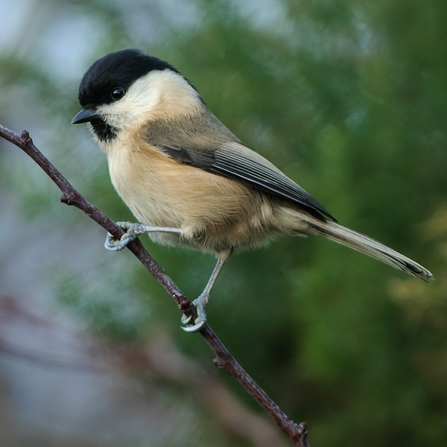
Willow Tit (C) John Bridges
The elusive willow tit
Having seen population crashes of 94% since the 1970s along with a 50% contraction in breeding range, willow tits have become the UK’s fastest declining resident bird.
The few remaining populations are restricted to the post-industrial landscapes of Yorkshire, and other parts of Northern England, Wales and the Midlands. The reason for such a dramatic decline have long been poorly understood, but habitat loss is considered to be a key factor.
The Bank from the Brink initiative
In the Dearne Valley, South Yorkshire, the willow tit was one of the species-focussed projects within the national Back from the Brink initiative. A partnership project delivered by Yorkshire Wildlife Trust and RSPB.
The project utilised radio tracking technology to follow the precise movements of 11 willow tits, learning more about their unique habitat, how far they will travel during the winter months and how conservation management can be implemented to safeguard the future of this charismatic species.
Tagged birds could be tracked for up to 12 days and in general, they stayed within a relatively small home range (averaging 2.8 hectares). Some, however, ventured further afield, sometimes travelling over a kilometre between scrub patches, utilising corridors of vegetation along old railway lines and riverbanks to discretely navigate the landscape and avoid predation.
